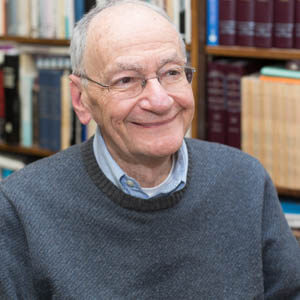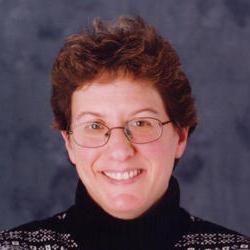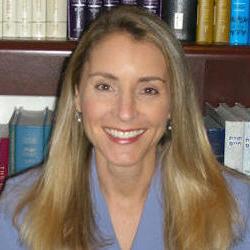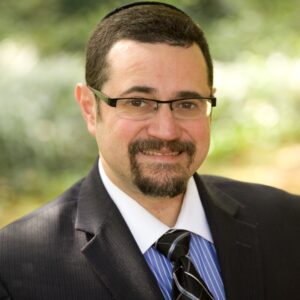Search Results
Back to JTS Torah Online's Main page
What is a Slave?
May 4, 2002 By Lewis Warshauer | Commentary | Behar
We were slaves of Pharaoh in Egypt. This is the story at the heart of the Passover Haggadah. Some editions of the Haggadah suggest a song that begins with We were slaves and goes on to say: Now we are free people. However, this song is somewhat misleading. We are not completely free people. The Torah claims that the Jewish people are still slaves: of God.

Mindfulness of God’s Image
May 4, 2002 By Ismar Schorsch | Commentary | Behar | Behukkotai
Though Judaism is distinguished by a this–worldly ethic, the acquisition of material possessions is not a high priority. The singular adage of Ben Zoma from the early days of rabbinic Judaism (second century), became normative: “Who may be deemed rich? Those content with their lot” (Pirkei Avot 4:1). We need far less than we want. To take comfort in what we have is to derive pleasure in values other than wealth.
Read More
Explaining the Inexplicable?
Apr 20, 2002 By Ismar Schorsch | Commentary | Aharei Mot | Kedoshim
In speaking of the legal corpus which dominates this week’s double parashah, the Torah makes use of two terms, mishpatim and hukkim, translated as “rules” and “laws.” Technically, as Baruch A. Levine makes clear in his commentary, they reflect two sources of legal practice. The word mishpatim deriving from the root sh-f-t, “to judge,” embodies rules articulated in a judicial setting. Hukkim from the root h-k-k “to engrave” or “inscribe” suggests laws promulgated by decree. In our parashah the terms seem to be synonymous, because God is the only lawgiver: “My rules (mishpatim) alone shall you observe, and faithfully follow My laws (hukkim): I the Lord am your God” (18:4).
Read More
Rabbi Akiba, Bar Kokhba, and the State of Israel
Apr 13, 2002 By Ismar Schorsch | Commentary | Lag Ba'omer | Yom Hazikaron-Yom Ha'atzma'ut
The Jewish calendar is more than a catechism of our faith. It is also a synopsis of our history. The biblical festivals of Pesah and Shavuot frame the period of the Omer, which is laden with days of commemoration of events that are all post-biblical, indeed largely set in the twentieth century. We move quickly on an emotional roller coaster from Yom Hashoah five days after the end of Pesah (27 Nisan) to Yom Hazikaron and Yom Haatzma’ut the following week (4 and 5 Iyar) to Lag Baomer thirteen days later (18 Iyar). The linkage between the Holocaust and Israel, embodied in the first three commemoratives, is surely warranted.

Know from Whence You Come
Apr 13, 2002 By Melissa Crespy | Commentary | Tazria
Commentators throughout the ages have been perplexed as to why a woman who has just given birth is considered by the Torah to be impure, and furthermore, why she needs to bring a sin offering after the birth! (Leviticus 12: 2, 6) After all, isn’t the first commandment given by God to Adam to “be fruitful and multiply”? (Genesis 1:28)
Read More
Faith in the Face of Loss
Apr 6, 2002 By Ismar Schorsch | Commentary | Shemini
Death in old age is sad but not tragic. The pain of loved ones left behind is tempered by the knowledge that this is the way of the world. Thus King David on his deathbed instructs Solomon, his son, soberly: “I am going the way of all the earth; be strong and show yourself a man” (I Kings 2:2). There is no reason to protest. The loss will take resolve to overcome, but the naturalness of the death holds its own comfort.
Read More
Sacred Space
Apr 6, 2002 By Lewis Warshauer | Commentary | Shemini
The writings of Abraham Joshua Heschel are justifiably popular. Many educators, especially but not only in the Conservative movement, teach Heschel’s views on prayer, Shabbat, and God’s place in the lives of the individual and the nation. One of Heschel’s most frequently talked-about concepts is that Judaism holds time to be more sacred than space. In Heschel’s most famous example, the Shabbat has greater holiness than any place or building.

Judaism’s Two New Years
Mar 23, 2002 By Ismar Schorsch | Commentary | Shabbat Hagadol | Pesah
In the Middle Ages, when rabbis were largely specialists in and adjudicators of Jewish law, they preached in the synagogue but twice a year, on Shabbat Hagadol prior to Passover and on Shabbat Shuvah prior to Yom Kippur. The ritual intricacies of each festival called for some public instruction. The custom highlighted the affinity between these two seasons which each in its own way initiated the start of a new year.
Read More
Dove and Rabbit
Mar 23, 2002 By Matthew Berkowitz | Commentary | Tzav | Pesah
The experience of the exodus from Egypt, Yeziat Mitzrayim, which we commemorate on Passover, is indelibly marked in the collective consciousness of the Jewish nation. It is this notion — of having been slaves to the Egyptians — that plays such a profound role in defining the moral and ethical demands that the Torah places on us. Having known the experience of oppression, we are commanded to take that to heart, lest we turn to oppress our fellow human beings. Thus, Passover is a time in which we dwell on the essence of what it is that defines us as a people: how does our experience of slavery shape the way we behave today? What does it mean to be a chosen people? And how is that we as a people deal alternately with powerlessness and power?
Read More
Va-yikra’s Lessons for Conservative Jews
Mar 16, 2002 By Matthew Berkowitz | Commentary | Vayikra
This week marks the beginning of the third book of the Torah, Vayikra, alternately referred to in Hebrew as Torat Kohanim, the ‘teaching of the priests’, and in Latin as Leviticus. Modern scholars and traditional commentators alike highlight the positioning of Vayikra , literally at the heart of the Five Book of Moses. Such placement of Vayikra speaks to the centrality of its teachings in the Israelite experience, especially as they pertained to the sacrificial cult practiced by the Israelites in the First and Second Temple periods.
Read More
The Third Party
Mar 16, 2002 By Melissa Crespy | Commentary | Vayikra
Of the various sacrifices discussed in Parashat Vayikra, the one which struck me this year had, ostensibly, nothing to do with offending or pleasing God! It concerned a guilt offering brought to God after one had wronged his “neighbor” or “fellow”:
Read More“If a person sins and commits a trespass against the Lord by dealing deceitfully with his fellow in the matter of a deposit or a pledge, or through robbery, or by defrauding his fellow, or by finding something lost and lying about it ; if he swears falsely regarding any one of the various things that one may do and sin thereby… ” (Leviticus 5:21).

From Behind a Cloud
Mar 9, 2002 By Lewis Warshauer | Commentary | Pekudei | Vayak-hel | Purim
The Book of Exodus ends on a note of triumph. The liberation from Egypt was followed by the giving of Torah and the building and dedication of the Tabernacle. God forgives the Israelites for their sin with the golden calf — and, in the closing lines of the book, God’s presence, in the form of a cloud, comes to rest upon the Tabernacle. Nahmanides, in his closing comment on this, the second book of the Torah, gives it the title: the book of redemption.
Read More
One Signal, Many Prophets
Mar 2, 2002 By Ismar Schorsch | Commentary | Pekudei | Vayak-hel
This week’s double parashah brings the book of Exodus to a triumphant close. No sooner is the Tabernacle erected (on the first of Nisan, the start of a new year), than it is graced by God’s presence. “When Moses had finished the work, the cloud covered the Tent of Meeting and the Presence of the Lord filled the Tabernacle. Moses could not enter the Tent of Meeting, because the cloud had settled upon it and the Presence of the Lord filled the Tabernacle” (40:33-35). The repetition serves to highlight the fact that God had taken up residence in the sanctuary to which all of Israel had contributed. God’s favor was visibly certifiable. The nation would not journey unaccompanied.
Read More
Transcending “Soulless Piety”
Mar 2, 2002 By Ismar Schorsch | Commentary | Ki Tissa
Writing in the week of my father’s yahrzeit, I am drawn to reflect again on some of the spiritual heirlooms he left behind. One of my favorites is the piquant term “soulless piety” which he coined to describe an all too common phenomenon that results when ritual observance loses its emotional charge and we find ourselves just going through the motions. Judaism is a religion predicated on behavior rather than belief; compliance outranks spontaneity in its scale of values.
Read More
Two Cows
Mar 2, 2002 By Lauren Eichler Berkun | Commentary | Ki Tissa | Shabbat Parah
There is a certain irony when parashat Ki Tissa falls on Shabbat Parah. In our weekly Torah portion, we read about the sin of the golden calf. In the maftir for this special Shabbat preceding Passover, we read about the ritual of the red heifer. Two cows on one Shabbat! One cow represents our complete abandonment of God a mere forty days after the revelation at Mt. Sinai. The other cow represents our ability to purify ourselves in the face of death and defilement.
Read More
A Kingdom of Priests
Feb 23, 2002 By Melissa Crespy | Commentary | Tetzavveh
Upon meeting non-Jews who are unfamiliar with what a rabbi is, I often tell them my role is somewhat akin to the role of a priest or a minister in the Christian tradition. But the truth is, there are significant differences between rabbis and priests. While rabbis often “officiate” at life cycle and worship ceremonies, Judaism does not require them to perform these rites. Whereas, in the Catholic church, priests are often the only ones who can perform life cycle and worship ceremonies, known as sacraments.
Read More
The Priest’s Brother
Feb 23, 2002 By Matthew Berkowitz | Commentary | Tetzavveh
Parashat T’tzavveh describes the positions of priests and the high priest (cohen gadol), the clothing of their office and their initiation ceremony, complete with sacrifices and incense. Nechama Leibowitz points out an unusual feature of the parasha: Moses’ name does not appear once. He appears indirectly, as God says, “You yourself, speak to all the wise–hearted, whom I have filled with the spirit of wisdom, that they make Aaron’s garments to sanctify him…” (Exodus 18:3). But even in the first phrase of the parasha, which so often reads, “And God spoke to Moses, saying…,” in T’tzavveh we read only, “And you yourself shall command the children of Israel (ve ata, tetzaveh et bnei Israel) that they bring you pure olive oil, beaten, for light, to burn a perpetual light” (Exodus 27:20).
Read More
Flames That Ascend on Their Own
Feb 23, 2002 By Melissa Crespy | Commentary | Tetzavveh
The Rabbis, ever careful readers of the Torah text, noticed an oddity in the first verse of our parashah. In describing how olive oil shall be brought to light the menorah — the seven—branched lampstand which stood in the Sanctuary — the Torah says: “You shall further instruct the Israelites to bring you [v’yikhu aylekha] clear oil of beaten olives for lighting, for kindling lamps regularly.” Shouldn’t the text say “instruct the Israelites to bring Me …” This was, after all, to be the Sanctuary where the Israelites felt the Divine Presence.
Read More
The Women’s Section
Feb 16, 2002 By Lewis Warshauer | Commentary | Terumah
A woman of valor–who can find her? In ancient Israel, the place one could not find her was in the Temple, except in a section called the ezrat nashim — literally, women’s territory. Only men served in the Temple as priests and Levites. This was partly a consequence of monotheism. In other ancient religions, with goddesses as well as gods, women would often control thetemples to goddesses.
Read More
“A Place for Your Stuff.”
Feb 16, 2002 By Joshua Heller | Commentary | Terumah
I’ve always appreciated a monologue by George Carlin on the topic of “a place for your stuff.” The comedian describes the way we accumulate physical things in our homes and basements. When we travel, we take a smaller version of our “stuff” with us.
Read MoreSUBSCRIBE TO TORAH FROM JTS
Our regular commentaries and videos are a great way to stay intellectually and spiritually engaged with Jewish thought and wisdom.




